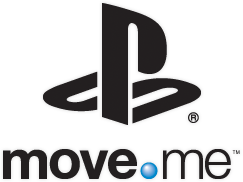New domains for brands: make.believe
As you know, a number of large companies from various industries submitted an application for registration of their own domain zones under the New gTLD program. Among them - Microsoft, Google, Canon, Motorola and many others. The number of firms that plan to register their domain in one of the hundreds of other new zones is generally not assessable.
ICANN believes that these companies, using sites in new domain zones to promote their products and services, will actively contribute to the development and promotion of the New gTLD program among a wide range of network users. Among the minuses are called, as a rule, only commercial expenses and some difficulties with brand protection from cybersquatters.
But recently, another nuance has surfaced, which can bring a lot of confusion among users.
')
At a conference of domain investors in New Jersey, one of the speakers talked about how bright and easily memorable domain names will be when they almost completely coincide with the brand name. As an example, she cited the logo of a local food transportation company:

This logo could be an excellent confirmation of its words, but the ".foods" domain is not among the applications for New gTLDs. There is only an application for the domain ".food", but this company has nothing to do with it.
This error is not accidental. Many companies in the names of their trademarks, logos, slogans and advertisements use a dividing point between words or another symbol with the same purpose. This gives the impression of similarity with the name of the site on the Internet.
More examples:
The Company The Company Lab, which provides start-up support services:

She, of course, has a domain in the .co zone, but she does not claim the .lab domain.
Here is another element of advertising from its site, also with dividing points:

The company also has a registered brand called CO.STARTERS.
If we imagine that hundreds of new domain zones have already appeared on the network, there will be confusion in the heads of users: seeing the logos and advertisements with dots, they will take them for website addresses on the Internet and ... will not find them.
Interestingly, this feature does not even take into account companies operating in the domain industry, for example, the owner of the alternative domain name system AnyExtension:

Of course, we can not ignore, perhaps the most famous example of using the dividing point from Sony:

And a more vivid example is the coincidence of the brand and logo with an already existing domain name, which Sony does not own: Move.me is an extension of the PlayStation, which allows you to control the game process using gestures.

You can pick more than a dozen such examples. Only one conclusion - the addresses of sites in the new domain zones will be confused with the names of the brands containing the dot. Probably, companies, in order to avoid such cases, will have to either register the relevant domains, or remove the dot from the names of their brands.
ICANN believes that these companies, using sites in new domain zones to promote their products and services, will actively contribute to the development and promotion of the New gTLD program among a wide range of network users. Among the minuses are called, as a rule, only commercial expenses and some difficulties with brand protection from cybersquatters.
But recently, another nuance has surfaced, which can bring a lot of confusion among users.
')
At a conference of domain investors in New Jersey, one of the speakers talked about how bright and easily memorable domain names will be when they almost completely coincide with the brand name. As an example, she cited the logo of a local food transportation company:

This logo could be an excellent confirmation of its words, but the ".foods" domain is not among the applications for New gTLDs. There is only an application for the domain ".food", but this company has nothing to do with it.
This error is not accidental. Many companies in the names of their trademarks, logos, slogans and advertisements use a dividing point between words or another symbol with the same purpose. This gives the impression of similarity with the name of the site on the Internet.
More examples:
The Company The Company Lab, which provides start-up support services:

She, of course, has a domain in the .co zone, but she does not claim the .lab domain.
Here is another element of advertising from its site, also with dividing points:

The company also has a registered brand called CO.STARTERS.
If we imagine that hundreds of new domain zones have already appeared on the network, there will be confusion in the heads of users: seeing the logos and advertisements with dots, they will take them for website addresses on the Internet and ... will not find them.
Interestingly, this feature does not even take into account companies operating in the domain industry, for example, the owner of the alternative domain name system AnyExtension:

Of course, we can not ignore, perhaps the most famous example of using the dividing point from Sony:

And a more vivid example is the coincidence of the brand and logo with an already existing domain name, which Sony does not own: Move.me is an extension of the PlayStation, which allows you to control the game process using gestures.

You can pick more than a dozen such examples. Only one conclusion - the addresses of sites in the new domain zones will be confused with the names of the brands containing the dot. Probably, companies, in order to avoid such cases, will have to either register the relevant domains, or remove the dot from the names of their brands.
Source: https://habr.com/ru/post/203496/
All Articles